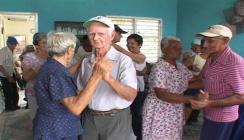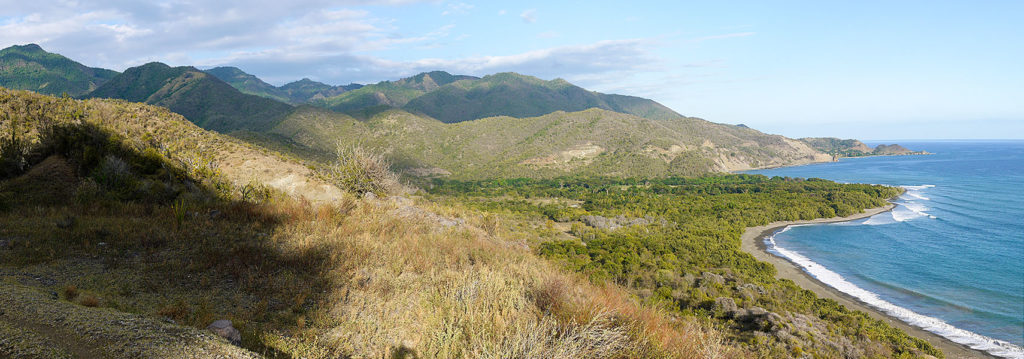CUBA, UN PUEBLO QUE ENVEJECE SIN REEMPLAZO GENERACIONAL.
Las estadísticas de las últimas décadas confirman que desde 1978 el grado de envejecimiento de la población cubana aumenta sin que exista un reemplazo generacional, pero los datos también revelan otros fenómenos que el país enfrenta en términos de población y que no aparecen de la misma camino en todos los territorios.
La provincia con mayor grado de envejecimiento es Villa Clara. Le sigue La Habana — la capital tiene una peculiaridad: el municipio de Plaza de la Revolución es el más envejecido del país con un 28 % de adultos mayores— y después Sancti Spíritus.
En el extremo opuesto se ubica el oriente del país, donde la cifra de individuos con más de 60 años es menor. En este contexto sobresale Yateras (provincia de Guantánamo) que es el municipio menos envejecido con solo un 11 % de ancianos.
Las Nuevas proyecciones son: Se calcula que habrá para finales de este año un 22 % de adultos mayores, en el 2030 vamos a tener alrededor del 31 %, finalmente en el 2050 el pronóstico es que haya 37 % de personas con 60 años y más y estaremos entre los países más envejecidos.
ALGUNOS NUMEROS DE LA POBLACION CUBANA.
Segun datos reportados, en 1966 nacieron 266 000 niños en Cuba. Entonces había un millón menos de mujeres en edad reproductiva que en la actualidad. En ese año 2016 los nacidos fueron 117 000. «Ese año crecimos en 220 habitantes. Es un crecimiento nulo», refiere el doctor Alfonso Fraga.
Otro fenómeno interesante es que la mayoría de los adultos mayores son mujeres y la mayor parte de los que rebasan la sexta década de vida son urbanos, situación de la que se deriva un proceso igualmente interesante: en las zonas rurales se está manteniendo una población masculina, envejecida y sola.
También las cifras arrojan que en los últimos años se viene registrando un ascenso de la inmigración permanente entre los que se incluyen personas de más edad. Las expectativa de vida en Cuba creció a 79 años de edad, y actualmente el 20 por ciento de la población en el país tiene 60 años o más, lo cual ubica a la nación antillana entre los países más envejecidos de América Latina.
Segun reportes gubernamentales en Cuba hay 149 Hogares de Ancianos, con 11 mil 801 camas.
Desde el 2017 hasta la fecha, no verificadas, se esperaban abririan 10 Nuevas Casas de Abuelos, de ellas cuatro en La Habana y dos en las provincias orientales de Camagüey, Granma y Santiago de Cuba, que sumarcian 385 capacidades, mientras se planifica un Hogar de Ancianos en La Habana y otro en Las Tunas.
En un contexto socio-demográfico en el que la familia tiende a ser cada día más pequeña, es precisamente este núcleo humano el sostén principal del proceso de envejecimiento y es la sociedad en su conjunto la que debe crear fórmulas para garantizar el cuidado de los adultos mayores tanto en formas estatales como no estatales. Para lograrlo el estado destina recursos financieros y humanos a las casas y círculos de abuelos, a las cátedras del adulto mayor y a las iniciativas que propicien la participación de los adultos mayores en la sociedad.
Sobre estos espacios de intercambio para la tercera edad opina el doctor Alfonso Fraga: «Esta es la gran ventaja de las casas del abuelo y de las cátedras del adulto mayor: es hacerlos participar, movilizar a nuestros abuelos en la sociedad. ¡Cuánto conocimiento y experiencia! Con eso podemos sentirnos seguros pero hay que desarrollarlo y cuidarlos». terminó diciendo.
CUBA, A COUNTRY THAT AGES WITHOUT A GENERATIONAL REPLACEMENT.
The statistics of the last decades confirm that since 1978 the degree of aging of the Cuban population increases without there being no generational replacement, but the data also reveal other phenomena that the country is facing in terms of population and which do not appear from the same way in all territories.
The province with the highest degree of aging is Villa Clara. It is followed by Havana – the capital has a peculiarity: the municipality of Plaza de la Revolución is the oldest in the country with 28% of older adults – and later Sancti Spíritus.
At the opposite extreme is the eastern part of the country, where the number of individuals over 60 years of age is lower. In this context, Yateras (Guantánamo province) stands out, which is the least aged municipality with only 11% of the elderly.
The new projections are: It is estimated that there will be 22% of older adults by the end of this year, in 2030 we will have around 31%, finally in 2050 the prognosis is that there will be 37% of people aged 60 and over and we will be among the oldest countries.
SOME NUMBERS OF THE CUBAN POPULATION.
According to reported data, in 1966 266,000 children were born in Cuba. There were a million fewer women of reproductive age then than today. In that year 2016, those born were 117,000. «That year we grew by 220 inhabitants. It is a null growth ”, refers the doctor Alfonso Fraga.
Another interesting phenomenon is that the majority of older adults are women and most of those over the sixth decade of life are urban, a situation from which an equally interesting process derives: in rural areas, a male population is being maintained. , aged and alone.
The figures also show that in recent years there has been an increase in permanent immigration, which includes older people. Life expectancy in Cuba grew to 79 years of age, and currently 20 percent of the population in the country is 60 years or older, which places the Antillean nation among the oldest countries in Latin America.
According to government reports, there are 149 Nursing Homes in Cuba, with 11,801 beds.
From 2017 to date, unverified, 10 new grandparents’ houses were expected to open, four of them in Havana and two in the eastern provinces of Camagüey, Granma and Santiago de Cuba, which add up to 385 capacities, while planning a home. Elderly in Havana and another in Las Tunas.
In a socio-demographic context in which the family tends to be smaller every day, it is precisely this human nucleus that is the mainstay of the aging process and it is society as a whole that must create formulas to guarantee the care of adults. older in both state and non-state forms. To achieve this, the state allocates financial and human resources to the houses and circles of grandparents, to the chairs of the elderly and to initiatives that promote the participation of the elderly in society.
On these exchange spaces for the elderly, Dr. Alfonso Fraga says: «This is the great advantage of the grandfather’s houses and the chairs of the elderly: it is to involve them, mobilize our grandparents in society. How much knowledge and experience! With that we can feel safe but we have to develop it and take care of it ». he finished saying.
Agencies/ Wiki/ RHC/ Various/ Internet Photos/ Arnoldo Varona, PJ. / www.TheCubanHistory.com
THE CUBAN HISTORY, HOLLYWOOD.












